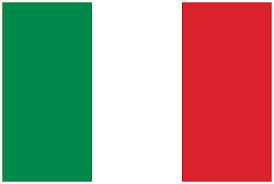2.2: Gli aggettivi
- Page ID
- 120345
\( \newcommand{\vecs}[1]{\overset { \scriptstyle \rightharpoonup} {\mathbf{#1}} } \)
\( \newcommand{\vecd}[1]{\overset{-\!-\!\rightharpoonup}{\vphantom{a}\smash {#1}}} \)
\( \newcommand{\dsum}{\displaystyle\sum\limits} \)
\( \newcommand{\dint}{\displaystyle\int\limits} \)
\( \newcommand{\dlim}{\displaystyle\lim\limits} \)
\( \newcommand{\id}{\mathrm{id}}\) \( \newcommand{\Span}{\mathrm{span}}\)
( \newcommand{\kernel}{\mathrm{null}\,}\) \( \newcommand{\range}{\mathrm{range}\,}\)
\( \newcommand{\RealPart}{\mathrm{Re}}\) \( \newcommand{\ImaginaryPart}{\mathrm{Im}}\)
\( \newcommand{\Argument}{\mathrm{Arg}}\) \( \newcommand{\norm}[1]{\| #1 \|}\)
\( \newcommand{\inner}[2]{\langle #1, #2 \rangle}\)
\( \newcommand{\Span}{\mathrm{span}}\)
\( \newcommand{\id}{\mathrm{id}}\)
\( \newcommand{\Span}{\mathrm{span}}\)
\( \newcommand{\kernel}{\mathrm{null}\,}\)
\( \newcommand{\range}{\mathrm{range}\,}\)
\( \newcommand{\RealPart}{\mathrm{Re}}\)
\( \newcommand{\ImaginaryPart}{\mathrm{Im}}\)
\( \newcommand{\Argument}{\mathrm{Arg}}\)
\( \newcommand{\norm}[1]{\| #1 \|}\)
\( \newcommand{\inner}[2]{\langle #1, #2 \rangle}\)
\( \newcommand{\Span}{\mathrm{span}}\) \( \newcommand{\AA}{\unicode[.8,0]{x212B}}\)
\( \newcommand{\vectorA}[1]{\vec{#1}} % arrow\)
\( \newcommand{\vectorAt}[1]{\vec{\text{#1}}} % arrow\)
\( \newcommand{\vectorB}[1]{\overset { \scriptstyle \rightharpoonup} {\mathbf{#1}} } \)
\( \newcommand{\vectorC}[1]{\textbf{#1}} \)
\( \newcommand{\vectorD}[1]{\overrightarrow{#1}} \)
\( \newcommand{\vectorDt}[1]{\overrightarrow{\text{#1}}} \)
\( \newcommand{\vectE}[1]{\overset{-\!-\!\rightharpoonup}{\vphantom{a}\smash{\mathbf {#1}}}} \)
\( \newcommand{\vecs}[1]{\overset { \scriptstyle \rightharpoonup} {\mathbf{#1}} } \)
\( \newcommand{\vecd}[1]{\overset{-\!-\!\rightharpoonup}{\vphantom{a}\smash {#1}}} \)
\(\newcommand{\avec}{\mathbf a}\) \(\newcommand{\bvec}{\mathbf b}\) \(\newcommand{\cvec}{\mathbf c}\) \(\newcommand{\dvec}{\mathbf d}\) \(\newcommand{\dtil}{\widetilde{\mathbf d}}\) \(\newcommand{\evec}{\mathbf e}\) \(\newcommand{\fvec}{\mathbf f}\) \(\newcommand{\nvec}{\mathbf n}\) \(\newcommand{\pvec}{\mathbf p}\) \(\newcommand{\qvec}{\mathbf q}\) \(\newcommand{\svec}{\mathbf s}\) \(\newcommand{\tvec}{\mathbf t}\) \(\newcommand{\uvec}{\mathbf u}\) \(\newcommand{\vvec}{\mathbf v}\) \(\newcommand{\wvec}{\mathbf w}\) \(\newcommand{\xvec}{\mathbf x}\) \(\newcommand{\yvec}{\mathbf y}\) \(\newcommand{\zvec}{\mathbf z}\) \(\newcommand{\rvec}{\mathbf r}\) \(\newcommand{\mvec}{\mathbf m}\) \(\newcommand{\zerovec}{\mathbf 0}\) \(\newcommand{\onevec}{\mathbf 1}\) \(\newcommand{\real}{\mathbb R}\) \(\newcommand{\twovec}[2]{\left[\begin{array}{r}#1 \\ #2 \end{array}\right]}\) \(\newcommand{\ctwovec}[2]{\left[\begin{array}{c}#1 \\ #2 \end{array}\right]}\) \(\newcommand{\threevec}[3]{\left[\begin{array}{r}#1 \\ #2 \\ #3 \end{array}\right]}\) \(\newcommand{\cthreevec}[3]{\left[\begin{array}{c}#1 \\ #2 \\ #3 \end{array}\right]}\) \(\newcommand{\fourvec}[4]{\left[\begin{array}{r}#1 \\ #2 \\ #3 \\ #4 \end{array}\right]}\) \(\newcommand{\cfourvec}[4]{\left[\begin{array}{c}#1 \\ #2 \\ #3 \\ #4 \end{array}\right]}\) \(\newcommand{\fivevec}[5]{\left[\begin{array}{r}#1 \\ #2 \\ #3 \\ #4 \\ #5 \\ \end{array}\right]}\) \(\newcommand{\cfivevec}[5]{\left[\begin{array}{c}#1 \\ #2 \\ #3 \\ #4 \\ #5 \\ \end{array}\right]}\) \(\newcommand{\mattwo}[4]{\left[\begin{array}{rr}#1 \amp #2 \\ #3 \amp #4 \\ \end{array}\right]}\) \(\newcommand{\laspan}[1]{\text{Span}\{#1\}}\) \(\newcommand{\bcal}{\cal B}\) \(\newcommand{\ccal}{\cal C}\) \(\newcommand{\scal}{\cal S}\) \(\newcommand{\wcal}{\cal W}\) \(\newcommand{\ecal}{\cal E}\) \(\newcommand{\coords}[2]{\left\{#1\right\}_{#2}}\) \(\newcommand{\gray}[1]{\color{gray}{#1}}\) \(\newcommand{\lgray}[1]{\color{lightgray}{#1}}\) \(\newcommand{\rank}{\operatorname{rank}}\) \(\newcommand{\row}{\text{Row}}\) \(\newcommand{\col}{\text{Col}}\) \(\renewcommand{\row}{\text{Row}}\) \(\newcommand{\nul}{\text{Nul}}\) \(\newcommand{\var}{\text{Var}}\) \(\newcommand{\corr}{\text{corr}}\) \(\newcommand{\len}[1]{\left|#1\right|}\) \(\newcommand{\bbar}{\overline{\bvec}}\) \(\newcommand{\bhat}{\widehat{\bvec}}\) \(\newcommand{\bperp}{\bvec^\perp}\) \(\newcommand{\xhat}{\widehat{\xvec}}\) \(\newcommand{\vhat}{\widehat{\vvec}}\) \(\newcommand{\uhat}{\widehat{\uvec}}\) \(\newcommand{\what}{\widehat{\wvec}}\) \(\newcommand{\Sighat}{\widehat{\Sigma}}\) \(\newcommand{\lt}{<}\) \(\newcommand{\gt}{>}\) \(\newcommand{\amp}{&}\) \(\definecolor{fillinmathshade}{gray}{0.9}\)Adjectives
An adjective describes something (a place, an object, a person, an idea, etc.). Consider this sentence in English: I live in a small town. Small is an adjective, and in this sentence it describes the town. The town could also be big, old, French, beautiful, chaotic… these are all adjectives.
Unlike in English, adjectives follow the noun in Italian. There are exceptions and they have to do with emphasis.
Adjectives in Italian must agree in gender and number with the noun that they are modifying, and they follow the same rules that you have already learned for nouns.
There are two general types of adjectives in Italian:
Type 1 – Adjectives that end in -o in the masculine-singular form. These adjectives have four forms:
| singular | plural | |
| masculine | moderno | moderni |
| feminine | moderna | moderne |
Type 2 – Adjectives that end in -e in the masculine-singular form. These adjectives have only 2 forms: a singular form and a plural form.
| singular | plural | |
| masculine | interessante | interessanti |
| feminine | interessante | interessanti |
Type 1 examples:
- Un negozio moderno > negozio is masculine singular, hence moderno.
- I negozi moderni > negozi is masculine plural, hence moderni.
- Una libreria moderna > libreria is feminine singular, hence moderna.
- Le librerie moderne > librerie is feminine plural, hence moderne.
Type 2 examples:
- Un libro interessante / Una città interessante > interessante works both as a masculine and as a feminine singular adjective.
- I libri interessanti / Le città interessanti > interessanti works both as a masculine and as a feminine plural adjective
Particular cases
- Adjectives ending in –ista:
| singular | plural | |
| masculine | ottimista | ottimisti |
| feminine | ottimista | ottimiste |
- Adjectives ending in – co and – go always add an h in the feminine plural form, but do not always add an h in the masculine plural form:
| singular | plural | |
| masculine | antico | antichi |
| feminine | antica | antiche |
Similar adjectives: stanco[tired], tedesco[German], pittoresco.
| singular | plural | |
| masculine | simpatico | simpatici |
| feminine | simpatica | simpatiche |
Similar adjectives: greco [Greek], gotico [Gothic], fantastico.
Adjectives that precede a noun
Some common adjectives can precede the noun. Among others, there are these pairs of opposites:
- bello / brutto Una bella città / Una brutta città
- buono / cattivo Una buona pizza / Una cattiva pizza
- nuovo / vecchio Un nuovo negozio / Un vecchio negozio
- piccolo / grande Una piccola piazza / Una grande piazza
- questo / quello Questa trattoria / Quella trattoria
- molti(e) / alcuni(e) Molti palazzi / Alcuni palazzi
| To say very use molto before an adjective. In this case molto does not change its form: questa città è molto bella. |
- When buono precedes the noun, it takes the form of the indefinite articles – un, uno, una, un’ – in the singular form:
| un → buon | una → buona |
| uno → buono | un’ → buon’ |
The plural forms are regular: buoni / buone.
- When bello and quello precede the noun, they take the form of the definite articles – il, lo, la, l’, i, le, gli:
| il → bel | il → quel |
| lo → bello | lo → quello |
| l’ →bell’ | l’ → quell’ |
| la → bella | la → quella |
| i → bei | i → quei |
| gli → begli | gli → quegli |
| le → belle | le → quelle |
However, when buono, bello, quello, and questo follow the noun (like any other adjective), they have regular forms. Examples:
Un buon panino vs. Quel panino è buono.
Due bei negozi vs. Quei due negozi sono belli.
Ti piace quel bar? vs. No, mi piace quello (quello here stands for bar)
- Questo is a regular adjective. However, when it is followed by a vowel in the singular form it contracts into quest’, as in quest’aula [this classroom].


